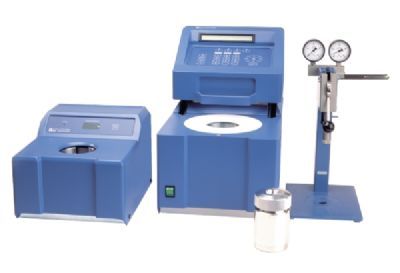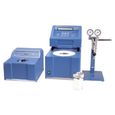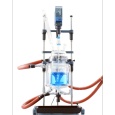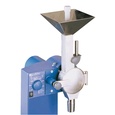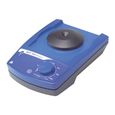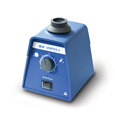方案详情
文
应用说明
请注意:此处所描述的操作步骤仅适用于催化活性防卤素分解氧弹C5012,不适用于C5010标准分解氧弹。
若您需要将样品分解并对卤素/硫含量进行分析和研究,我们将提供如下多种方法供您参考:
方案详情

Application notes IMPORTANT NOTE: THE PROCEDURES DESCRIBED IN HERE, APPLY ONLY TO THE CATALYTIC ACTIVATED AND HALOGEN RESISTANT DECOMPOSITION VESSEL C 5012. THEY CAN NOT BE USED WITH THE C 5010 DECOMPOSITION VESSEL! If you needs to analyze Halogens and/or sulfur after the decomposition, a variety of different methods to do so are shown below.The examples described below are done with the IKA – Control standards AOD 1.11 and AOD 1.12. These control standards are mineral oils that contain a known amount of Chlorine, Sulfur and Fluorine, Bromine. To get the best results on Halogens and Sulfur it is required to use the special decomposition vessel C5012 or the AOD 1 Decomposition System. The C 5012 decomposition vessel can be used with the C 2000 or C 5000 Calorimeter. We also offer them in Packages “C 2000 basic Version 2 (Package)” and “C 5000 Package 1/12”. This vessel can be used with the C 200 Calorimeter! 应用说明请注意:此处所描述的操作步骤仅适用于催化活性防卤素分解氧弹C5012,不适用于C5010标准分解氧弹。 若您需要将样品分解并对卤素/硫含量进行分析和研究,我们将提供如下多种方法供您参考:以下应用范例所使用的溶液样品均为IKA AOD1.11硫/氯标准溶液和AOD1.12氟/溴标准溶液,这些标准溶液为已知氯,硫,氟,溴含量的矿物油。为了获得卤素和硫含量的最佳测定效果,须使用C5012防卤素分解氧弹或AOD 1分解系统对样品进行分解。C5012防卤素分解氧弹适用于C 2000 和 C 5000量热仪。在我们的产品套装“C 2000基本型配置 2 (套装)” 和“C 5000控制型配置 1/12”均含有C5012,也适用于C200量热仪。 Sample preparation From the homogeneous standard oil AOD 1.11 0.2 - 0.5 g of the sample are filled directly into the quartz crucible and/or into the C 10 Acetobutyrate Capsule.The originally weighted-in quantity of the sample material is noted or entered into the Calorimeter. It is required later again for the content calculation. If using the capsules the weight of the empty capsule has to be noted as well, or entered into the Calorimeter, since the energy additionally introduced thereby must be deducted from the gross calorific value as foreign (aka spike) energy that is not created by the sample itself. We do have special automated solutions for this procedure in combination with a balance connected to the Calorimeter. Please contact us for further details. 样品的准备AOD1.11硫/氯标准溶液摇匀后取0.2 - 0.5 g置入石英坩埚或C10乙酰丁酸脂胶囊。 记录下置入坩埚/胶囊内样品的原始重量,或将其输入量热仪。在后续的实验中,样品的原始重量将用于待测物质含量的计算。若使用的是胶囊而非坩埚,则亦需对空心胶囊的重量进行记录,或输入到量热仪中。因为在实验过程中非样品产生的外来能量)需要从总热值中扣除。针对这个计算环节,我们亦有专门的自动化的解决方案(需将一个天平连接到量热仪)供选择,如有需要请与我们联系。 Preparing the decomposition vessel 5-10 ml of the absorption solution is filled into the decomposition vessel. The absorption solution can vary in composition and concentration depending on the specifications of the sample and the method used to analyze the Halogens and/or Sulfur. The most common used absorption solution is composed of: 10 ml of 0.25 Sodium hydroxide (NaOH) and 200?l of 30% Hydrogen peroxide (H2O2)This standard absorption solution is suitable for almost all applications. If a different solution is used in any of the following application, it is mentioned separately In some cases it is necessary to use the “C 5030 Venting station”. Especially when looking at Iodine (I) or traces respectively high quantities of Halogens. In this case the washing-bottle of the station is filled with the appropriate amount of absorption solution as well.A cotton thread is connected to the ignition wire and the quartz crucible (with the weighed in sample) is inserted into the crucible holder of the decomposition vessel. The cotton thread is hung into the crucible that it will ignite the Acetobutyrate Capsule or oil when the ignition is done by the Calorimeter.The decomposition vessel is closed and hung into the Calorimeter’s decomposition vessel acceptance.The Calorimeter is started and fills oxygen into the vessel. In some cases it is necessary to fill and vent the decomposition vessel several times before starting the actual measurement. This procedure varies depending on the Calorimeter that is used. Please contact IKA for further details. 分解氧弹的准备将5-10 ml吸收液置入分解氧弹中。吸收液的成分和浓度可因样品的性质和分析卤素/硫的方法而有所不同。最常用的吸收液由以下物质组成:10ml浓度为0.25mol/L的氢氧化钠 (http://wenwen.soso.com/z/Search.e?sp=S%E6%B0%A2%E6%B0%A7%E5%8C%96%E9%92%A0&ch=w.search.yjjlink&cid=w.search.yjjlink" \t "_blank)(NaOH)溶液和200μl 30%的过氧化氢溶液 (H2O2)这种标准吸收液适用于几乎所有的应用,若以下范例中有任何应用所用的吸收液非此种吸收液则会另外指出。在某些应用中须用到“C5030放气站”,特别是对碘(I)进行研究或分析高含量卤素样品时。在此类应用中,亦须将适量的吸收液放入放气站的洗气瓶中。将棉线连接到点火丝,并把装有样品的石英坩埚装入分解氧弹内的坩埚托架上。棉线垂挂于坩埚内,当量热仪的点火丝被点燃后棉线将坩埚内的乙酰丁酸脂胶囊或油剂引燃。 在此过程中,分解氧弹会始终密闭并悬挂在量热仪的氧弹连接头上。启动量热仪并将氧气充入氧弹中。有时候需重复充气和放气这两个步骤几次之后方能开始进行测量。这个步骤可因使用不同类型的量热仪而各异。若需更详尽的资料请联系我们。 ION-CHROMATOGRAPHY - Sulfur (S) & Halogens (F, Cl, Br, I) The determination was done with an Ion chromatograph manufactured by Dionex (DX- 1000/120) by means of a conductivity measurement.This procedure allows the determination of all Halogens and Sulfur in one run! It is probably the most convenient, but also most expensive solution.The absorption solution is specially created around the Eluent used with the IC, in order to get rid of the “water-peak”, and to optimize the performance of the IC.1 Liter of the absorption solution consist of: 1 Liter stock solution consists of:50 ml stock solution 21.2 g Na2CO and 6.30 g NaHCO3 25 ml 30% H202 7 - 8 NaOH – pellets Follow the steps described in the section “Rinsing the decomposition vessel”.A sample is taken and injected into the IC that will show all Halogens and Sulfur on one chromatogram only 离子色谱分析法 – 硫 (S) &卤素 (F, Cl, Br, I) 此方法是使用由戴安公司生产的离子色谱仪(DX- 1000/120)通过电导率测量方法对卤素(F, Cl, Br, I)和硫(S)的含量进行测定。通过这种方法可以一步完成对所有卤素和硫含量的测定。这有可能是最便捷的测定方法,但也是最昂贵的。在离子色谱分析仪的洗脱液周围将会产生一种特别的吸收液,以去除“水峰”的影响并优化离子色谱分析仪的性能。1L吸收液由以下物质组成:1L原液由以下物质组成:50ml原液,21.2克 Na2CO,6.30克 NaHCO3,25ml 30%的过氧化氢溶液 (H2O2),7-8颗氢氧化钠颗粒实验结束后请根据下文“分解氧弹的清洗方法”所述的步骤对分解氧弹进行清洗。提取分解后的样品并将其注射到离子色谱分析仪中,所有的卤素和硫含量将会显示在同一个色谱图中 TITRATION - Chlorine (Cl) The determination of Chlorine was done with a Titration processor by titrating against with silver nitrate (AgNO3). Follow the steps described in the section “Rinsing the decomposition vessel”.An aliquot is removed for the measurement (50.0 ml or 100.0 ml) and transferred into a titration cup.The aliquot factor is noted and needed later for the calculation of the result. The titration cup is then filled approximately halfway with distilled water and 2 ml of concentrated Nitric acid (HNO3) are added.The titration cup is then placed into the analysis processor and the corresponding procedure is started. After several minutes the result is shown on the display in milligrams. The halogen concentration can be calculated from this taking the originally weighted-in quantity and the aliquot factor into consideration 滴定法- 氯 (Cl) 使用滴定处理器通过对硝酸银 (AgNO3)进行滴定实验测定氯(Cl)的含量。实验结束后请根据下文“分解氧弹的清洗方法”所述的步骤对分解氧弹进行清洗。量取一等分(50.0 ml 或100.0 ml)分解后的样品,并倒入滴定杯中记录下等分因数以便用于后续的结果计算。然后往滴定杯中倒入约半杯的蒸馏水,最后将2ml浓硝酸(HNO3) 加入滴定杯中。 将滴定杯放入滴定处理器并启动相应的测试程序,几分钟后测试结果将以毫克为单位在屏幕上显示出来。卤素的浓度可以综合测试结果及原始的样品重量、等分因数进行计算得出。 ION SELECTIVE ELECTRODES (ISE) - Chlorine (Cl) The determination of Chlorine (Cl) was done with a Potentiometer, equipped with a Solid-Ion-selective-Electrode Cl 500 in combination with the Reference-electrode R 502.Follow the steps described in the section “Rinsing the decomposition vessel”.Experience from these measurements as well with other samples showed that this method is not suitable for all applications. If the sample contains other Halogens than just Chlorine (Cl), Bromine (Br) can interfere with the Chlorine (Cl) electrode for example. 离子选择性电极法(ISE)- 氯 (Cl) 使用配有固体-离子选择性电极CI 500和参比电极R502的电位计测定氯(Cl)的含量实验结束后请根据下文“分解氧弹的清洗方法”所述的步骤对分解氧弹进行清洗。根据此类测定实验总结出来的经验以及其他有关案例表明,这种测定方法并非适用于所有类型的应用,比如,如果待测样品含有除了氯 (Cl), 溴 (Br)以外的其他卤素,则会对氯 (Cl)电极产生干扰。 PHOTOMETRY - Sulfur (S) Sulfur can be found in the absorption solution in the form of Sulfate (SO42-). The determination of Sulfate (SO42-) was done with a Photometer. Follow the steps described in the section “Rinsing the decomposition vessel”.The error of this test is probably a little too high for some customer requirements. But might still be good enough for „quick-test“applications. 光度测定法 – 硫 (S) 硫以硫酸盐(SO4)2-的形式存在于吸收液中,然后使用光度计对硫酸盐(SO4)2-的含量进行测定。实验结束后请根据下文“分解氧弹的清洗方法”所述的步骤对分解氧弹进行清洗。这种测定方法的错误率对于一些用户的要求来说可能有点过高,但就“快速测定”这一应用要求而言,它仍不失为一种好方法。 ION-CHROMATOGRAPHY - Iodine (I) The sample analyzed in this application was a mineral fodder for cows. Similar tests have been done with birdseeds as well.The determination of Iodine (I) was done with an Ion-chromatograph with a UV/VIS-Detection unit.NOTE: For this application the C 5030 Venting station is absolutely required to get good results. 50 ml of the absorption solution described above are filled into the washing bottle.Follow the steps described in the section “Rinsing the decomposition vessel”.There are two important things to mention for this application. The vessel needs to be shaken before venting it very slowly (for 90 minutes) through the absorption solution in washing bottle of the C 5030 venting station. 离子色谱分析法 – 碘 (I) 此应用的待测样品是奶牛的矿物饲料,类似测试也曾应用于对鸟食的研究。 使用带有UV/VIS检测装置的离子色谱分析仪对碘(I)的含量进行测定。请注意:在此类应用中为了得到理想的测试结果必须使用C5030放气站。须将50ml上述吸收液置入洗气瓶中。实验结束后请根据下文“分解氧弹的清洗方法”所述的步骤对分解氧弹进行清洗。有两点必须指出的是:放气之前需摇荡氧弹,然后再将气体慢慢排放(约90分钟)到C5030放气站中洗气瓶内的吸收液里 AAS - Mercury (Hg) & Arsenic (As) IKA has a lot more applications and experience than what is shown here. Please contact us directly for further detailed information and more details on the applications shown above. 原子吸收分光光度法 - 汞 (Hg) & 砷 (As)除本文所述的应用范例以外,IKA还有众多丰富的应用经验可供您参考。若您需要更多更详尽的有关上述应用范例的信息,请直接与我们联系。 Rinsing the decomposition vessel After the experiment is done, the Calorimeter opens up. Remove the decomposition vessel, vent the gases under a fume hood, or connect it to the “C5030 Venting station”. The gases need to be vented slowly through the absorption solution inside the washing bottle of the venting station.Rinse the vessel carefully with distilled water or if using an Ion-chromatograph, use the Eluent. Care should be taken to ensure that all parts of the vessel are rinsed. Rule of thumb: better rinse 2-3 times with small quantities of distilled water or Eluent than only once with a lot of distilled water or Eluent!The absorption solution in the decomposition vessel, as well as the absorption solution in the washing-bottle of the “C 5030 Venting station” are filled from the washing bottle into a volumetric flask with the appropriate volume, and is filled up to its calibration mark. 分解氧弹的清洗方法实验结束后打开量热仪,取出氧弹,在通风橱内放气,或将其与“C5030放气站”连接后放气。氧弹内的气体需慢慢地排放到放气站内洗气瓶中的吸收液里。 使用蒸馏水小心清洗氧弹,如果是使用离子色谱仪进行实验,则使用洗脱液对氧弹进行清洗。须谨慎清洗以确保氧弹所有部件都被彻底清洁。经验之谈:使用少量蒸馏水/洗脱液进行2-3次清洗的清洗效果比使用大量蒸馏水/洗脱液进行仅一次清洗的清洗效果要好分解氧弹和“C5030放气站”洗气瓶中的吸收液应事先倒入相应容量的容量瓶中进行定容 Cleaning the decomposition vessel C 5012 IMPORTANT NOTE: THE PROCEDURES DESCRIBED IN HERE, APPLY ONLY TO THE CATALYTIC ACTIVATED AND HALOGEN RESISTANT DECOMPOSITION VESSEL C 5012. THEY CAN NOT BE USED WITH THE C 5010 DECOMPOSITION VESSEL! It must be guaranteed that no contamination is present in the decomposition vessel, and it needs to be cleaned in a way that the elements to be determined are not present in the cleaning agent. For example, do not use Hydrochloric acid (HCl) to clean the vessel if Chlorine has to be determined!Suitable cleaning agents are acetone, isopropyl alcohol and distilled water. In cases of trace analysis the decomposition vessel can be cleaned with concentrated nitric acid (HNO3). Contact IKA for more details on this procedure before performing it!The decomposition vessel is then dried using a lint-free cellulose cloth or the like, and can be prepared for the decomposition. 防卤素分解氧弹C5012的清洁方法请注意:此处所描述的操作步骤仅适用于催化活性防卤素分解氧弹C5012,不适用于C5010标准分解氧弹。 必须确保在分解氧弹中没有任何实验污染物残留,而且所使用的清洁剂中不能含有任何待测物质。例如,如果您要对氯的含量进行测定,请不要使用盐酸(HCl)对氧弹进行清洁。适用的清洁剂有丙酮,异丙醇和蒸馏水。若是痕量分析应用可使用浓硝酸(HNO3)对氧弹进行清洁。若有这方面的应用需求,建议您在使用此种清洁方法之前先向IKA进行详细咨询。然后使用不留棉絮的纤维布或类似物质擦干分解氧弹,以备下次分解实验使用。
确定
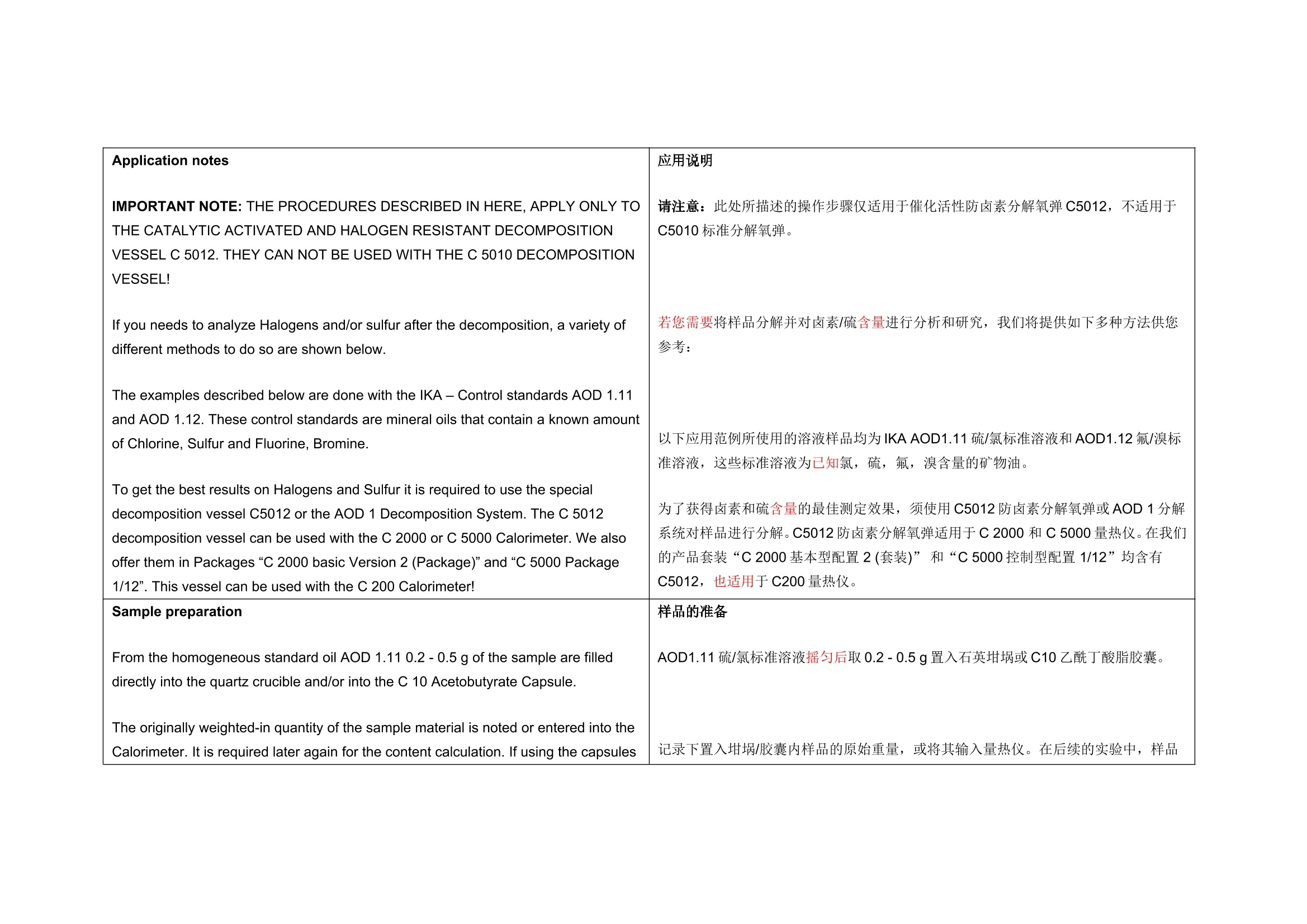
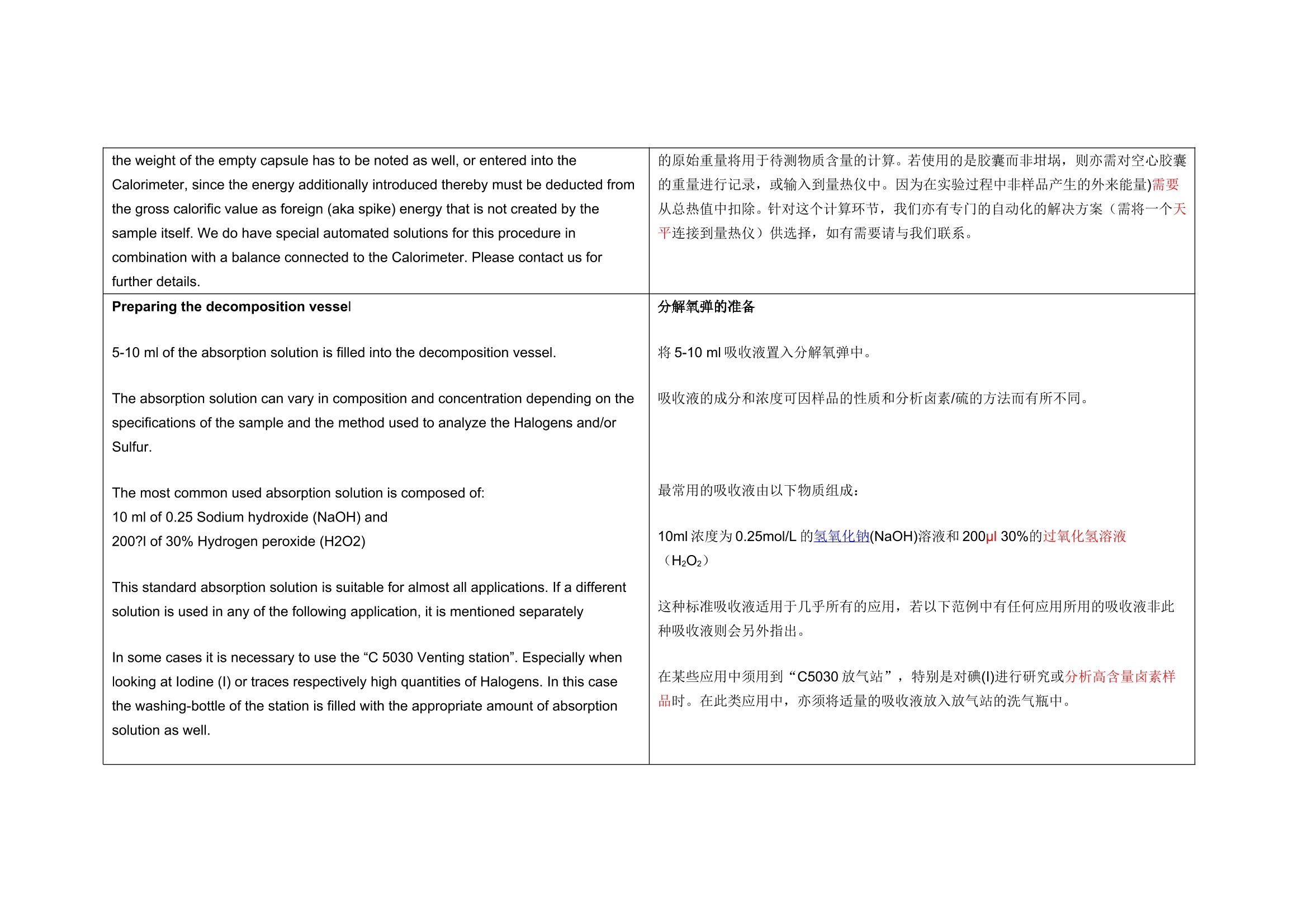





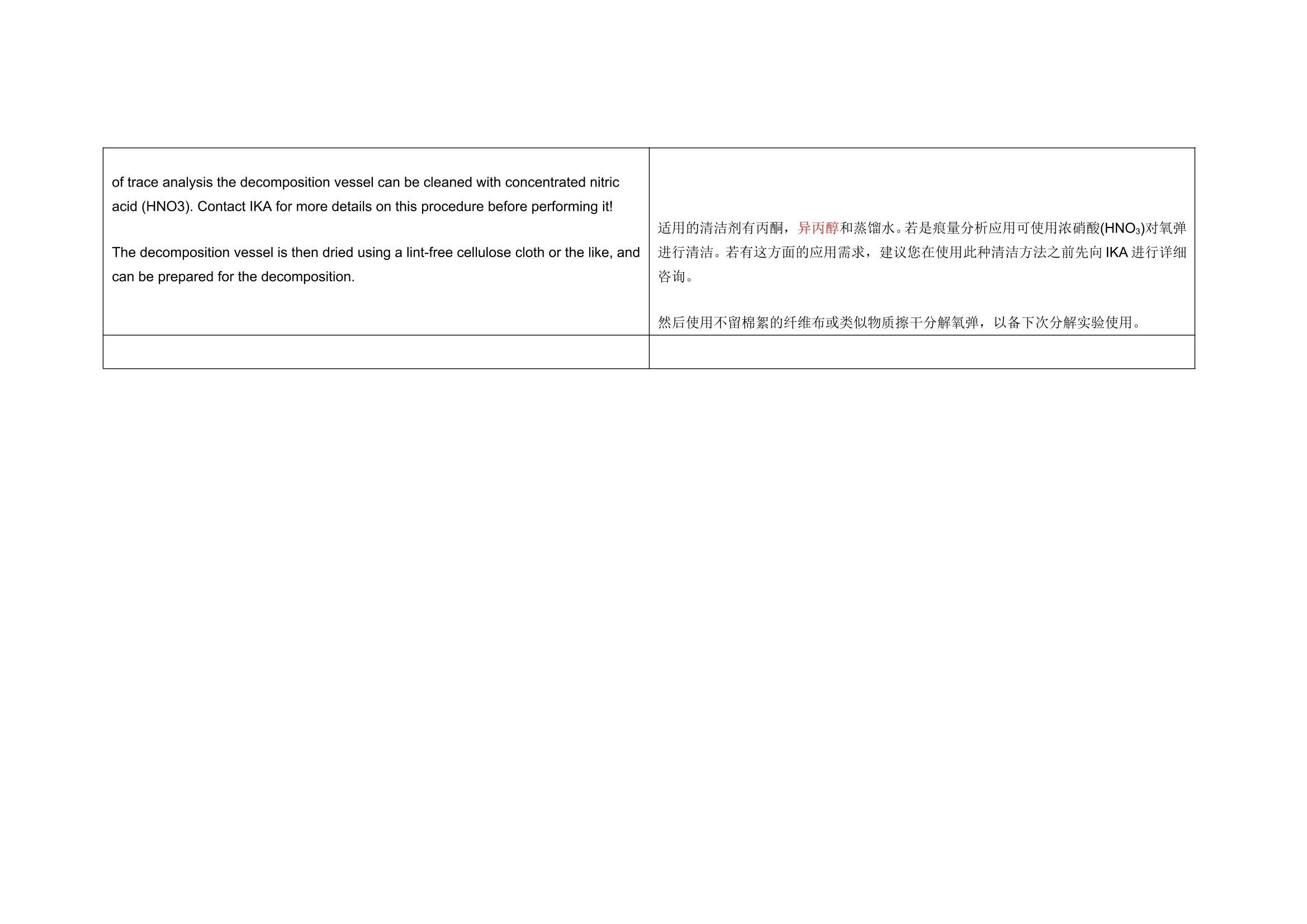
还剩6页未读,是否继续阅读?
艾卡(广州)仪器设备有限公司(IKA 中国)为您提供《IKA量热仪的应用》,该方案主要用于其他中矿物油检测,参考标准--,《IKA量热仪的应用》用到的仪器有德国IKA/艾卡 C 7000 basic equipment s 氧弹量热仪 、反应釜-德国IKA玻璃反应釜、研磨机、IKA剪切刀头MF10.1、德国IKA/艾卡 MS 3 basic 圆周振荡器、德国IKA/艾卡圆周振荡摇床KS 260 basic、德国IIKA圆周振荡器Vortex2
相关方案
更多

